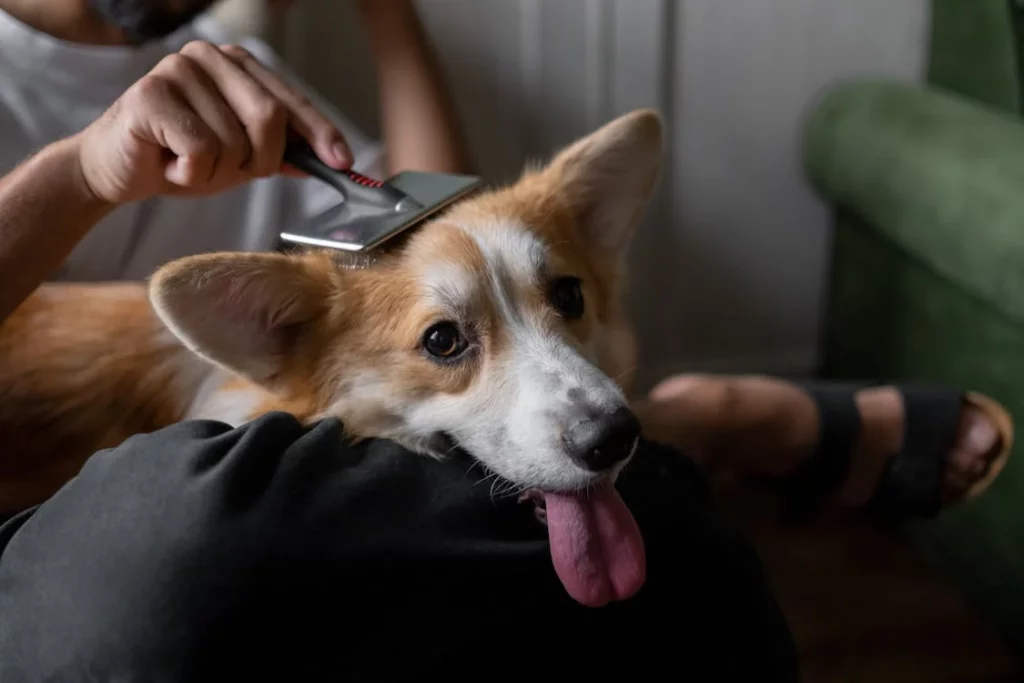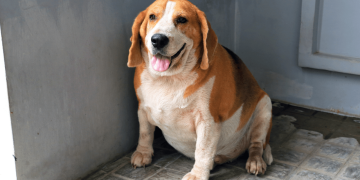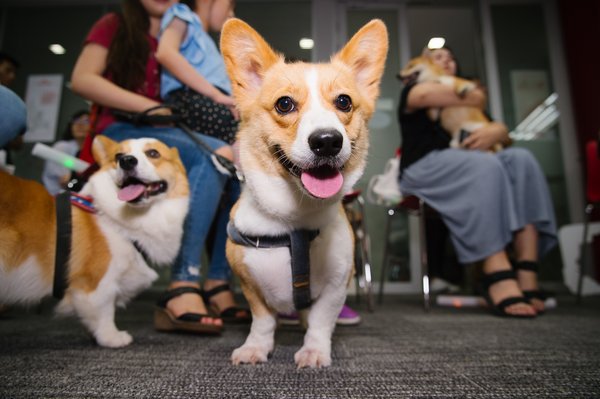Bringing a new pet into your home or moving your existing pet to a new environment can be a stressful experience for both you and your furry friend. Pets are creatures of habit, and changes in their surroundings—whether it’s a new home, new family members, or new routines—can lead to anxiety and confusion. Fortunately, there are several steps you can take to make the transition smoother for your pet and help reduce any anxiety they may experience.
In this article, we’ll explore why pets experience anxiety when adjusting to a new environment, how you can recognize the signs of anxiety, and provide practical tips for helping your pet feel more comfortable in their new home.
Why Do Pets Experience Anxiety in a New Home?
Before diving into solutions, it’s important to understand why pets may feel anxious when moving into a new home. Just like humans, pets thrive on routine and familiarity. When their environment changes, they can feel disoriented, scared, or overwhelmed.
Here are some common reasons pets experience anxiety in a new home:
- Change in Familiarity: Pets often feel more comfortable in environments they recognize. Moving to a new home means everything—smells, sounds, and even the layout—are unfamiliar, which can make them anxious.
- Separation from Familiar People or Pets: If your pet has been in a household with familiar people or other pets, they may miss these companions when they are relocated to a new place.
- Unfamiliar Sounds and Smells: A new home comes with new smells (like furniture or cleaning products) and sounds (such as street noise or new neighbors) that can make pets uneasy.
- Disruption in Routine: Pets—especially dogs and cats—rely on routines for eating, sleeping, and playing. A new environment often disrupts these routines, which can cause stress and anxiety.
- Lack of Control: Some pets may feel anxious if they feel they are not in control of their environment. This can happen if they are confined in an unfamiliar space, especially if they are not given time to explore and adjust at their own pace.
Understanding the causes of anxiety will help you approach the situation with empathy and patience.
Signs of Anxiety in Pets
Pets, especially cats and dogs, express anxiety in different ways. Being aware of these signs can help you identify if your pet is experiencing anxiety in the new environment:
Signs of Anxiety in Dogs:
- Whining, Barking, or Howling: Excessive vocalization, particularly if your dog is left alone, is a common sign of anxiety.
- Pacing or Restlessness: Dogs that are anxious may pace back and forth or seem unable to settle down.
- Excessive Drooling: Some dogs drool more than usual when stressed.
- Destructive Behavior: Anxious dogs may chew on furniture, scratch doors, or engage in other destructive behaviors.
- Loss of Appetite: Stress and anxiety can lead to a loss of interest in food or water.
- Excessive Licking or Grooming: Dogs may lick themselves excessively or engage in self-soothing behaviors like chewing on their paws.
- Accidents in the House: Anxious dogs may have accidents indoors, even if they are house-trained.
Signs of Anxiety in Cats:
- Hiding: Cats may retreat to secluded spots when they’re stressed, refusing to come out even for food or affection.
- Increased Vocalization: Cats may meow excessively when they are anxious, particularly if they are feeling disoriented or frightened.
- Over-Grooming: Cats may groom themselves obsessively or even develop bald spots from stress-induced licking.
- Changes in Eating or Litter Box Habits: Cats may refuse to eat or drink, or they may stop using the litter box properly.
- Aggression: Some cats may become more irritable or aggressive when they feel threatened or anxious.
Recognizing these signs is crucial in identifying if your pet needs additional support during the transition to their new home.
How to Help Your Pet Adjust to Their New Home and Reduce Anxiety
Now that we understand why pets experience anxiety and how it manifests, here are practical steps you can take to help your pet adjust to their new home and minimize stress.
1. Create a Safe, Familiar Space
When you first bring your pet into the new home, it’s important to provide them with a designated space where they can feel secure and relaxed. This space should include things that are familiar to them, such as:
- Comfortable Bedding: Use your pet’s favorite bed, blanket, or a piece of clothing with your scent to provide comfort.
- Toys and Chews: Bring along any toys or chew items they enjoy to help them feel more at home.
- Familiar Scents: If you’re moving, take your pet’s bedding, blankets, or items from their old home to give them a sense of familiarity.
For dogs, this could be a crate or a quiet room where they can retreat. For cats, a cozy hiding spot like a soft cat bed or a small room away from the hustle and bustle of the household can help them feel safe.
2. Gradual Introduction to the New Environment
Don’t overwhelm your pet by exposing them to the entire house all at once. Take things slow:
- Dogs: If you have a dog, start by introducing them to one room at a time. Let them explore at their own pace, and don’t force them to venture into new areas too quickly.
- Cats: For cats, it’s especially important to let them adjust to their new environment gradually. Start by confining them to one room and allowing them to get comfortable before expanding to other areas of the house.
Gradual exposure to new spaces will help your pet build confidence and feel more secure in their new surroundings.
3. Stick to Familiar Routines
Routine is key to reducing anxiety in pets. As much as possible, maintain your pet’s regular schedule for meals, walks, playtime, and bedtime. This helps them feel more in control and reassured by the predictability of their day.
- Feed at the Same Time: Stick to the same feeding schedule your pet had in their previous environment.
- Exercise and Play: Ensure that your dog or cat gets enough physical and mental stimulation each day. A good walk, a game of fetch, or interactive playtime can help reduce stress and keep them calm.
- Bedtime Routine: Keep your pet’s bedtime routine consistent. This includes where they sleep and the time you typically settle down for the night.
Consistency provides reassurance and can help your pet feel more comfortable, even in a new environment.
4. Give Your Pet Plenty of Attention and Affection
Moving to a new home can feel isolating for your pet, so it’s important to provide plenty of attention and reassurance. Spend time with your pet, offering affection and comfort when they seek it. This will help build trust and let your pet know that they’re safe and loved in the new environment.
- Calm Reassurance: Speak to your pet in a calm, soothing voice. Your tone can be incredibly reassuring.
- Interactive Time: Spend quality time with your pet through petting, play, and training. This will help them feel more secure and connected to you.
5. Provide Mental and Physical Stimulation
As mentioned earlier, boredom and a lack of mental or physical stimulation can exacerbate anxiety in pets. Ensure that your pet has outlets to release energy and satisfy their natural instincts.
- Interactive Toys: Use puzzle toys, treat-dispensing toys, or interactive games to engage your pet’s mind. This will keep them occupied and help reduce stress.
- Walks and Play: For dogs, ensure that they get daily walks and outdoor time. Exercise is an excellent way to burn off excess energy and reduce anxiety.
- Climbing or Scratching Posts: For cats, provide vertical space like cat trees or scratching posts. These help them feel more secure and provide outlets for natural behaviors.

6. Use Calming Products
If your pet’s anxiety is particularly severe, consider using calming products that may help them feel more relaxed:
- Pheromone Diffusers: Products like Feliway (for cats) or Adaptil (for dogs) mimic natural calming pheromones that can help ease anxiety.
- Calming Collars: These collars release calming scents that may help reduce stress in dogs and cats.
- Anxiety Wraps: Products like Thundershirts provide gentle pressure around your pet’s body, which can have a calming effect.
These products can be used in conjunction with other methods to help soothe your pet during their transition.
7. Gradual Alone Time Training
If your pet experiences separation anxiety, it’s important to help them get used to being alone in their new home. Start with short periods of alone time and gradually increase the duration. Make sure to leave them with familiar items like their bed or favorite toy.
- Practice Absences: Begin by leaving your pet alone for a few minutes and gradually increase the time as they become more comfortable.
- Create Positive Associations: When leaving, offer a treat or a favorite toy to associate your departure with something positive.
8. Patience is Key
It’s important to be patient and understanding during the transition period. Every pet adjusts at their own pace, and some may take longer than others to feel comfortable in their new environment. If your pet is showing signs of stress or anxiety, give them time, and continue to support them through the adjustment period.
If anxiety persists or worsens, or if your pet exhibits severe behavior issues (such as aggression or destructive behavior), it’s a good idea to consult with a veterinarian or a professional animal behaviorist. They can offer additional guidance and rule out any underlying health issues.
Conclusion
Helping your pet adjust to a new home is a process that requires time, patience, and a little extra care. By creating a familiar and safe space, sticking to routines, and providing emotional support, you can help ease your pet’s transition and reduce any anxiety they may feel. With the right approach, your pet will soon feel at home in their new surroundings, and you’ll both be able to enjoy your new life together.























































